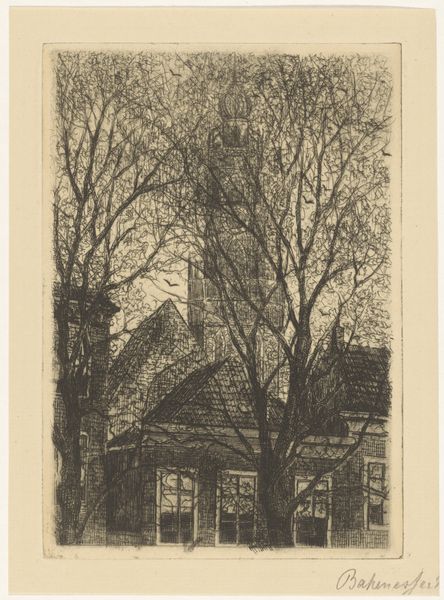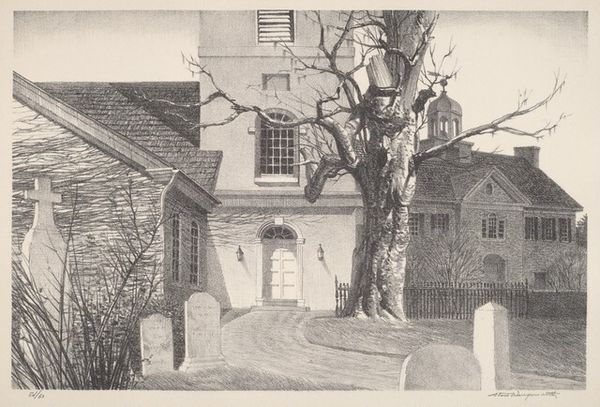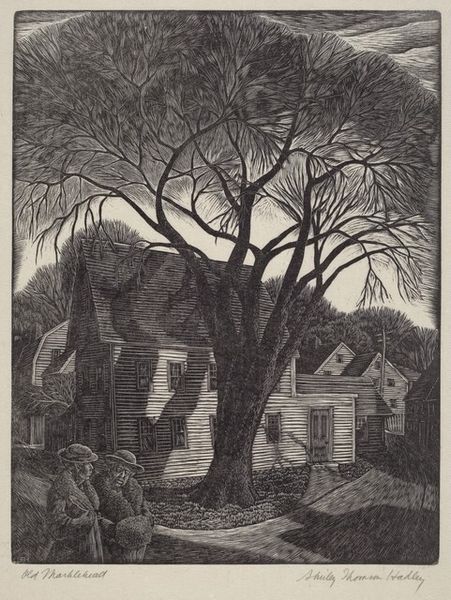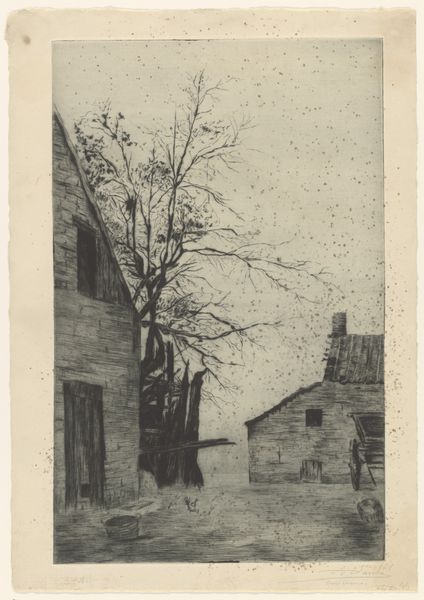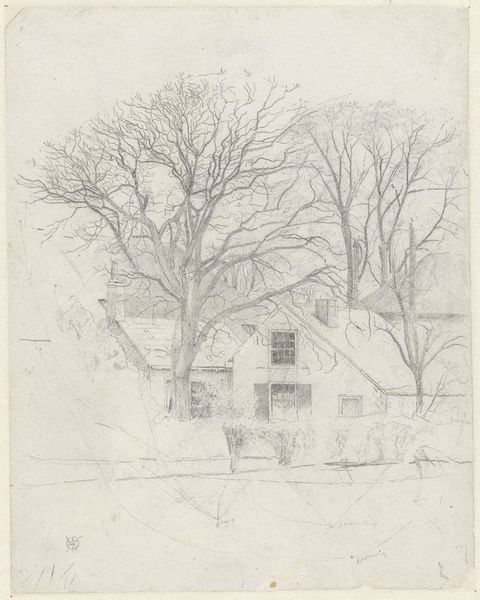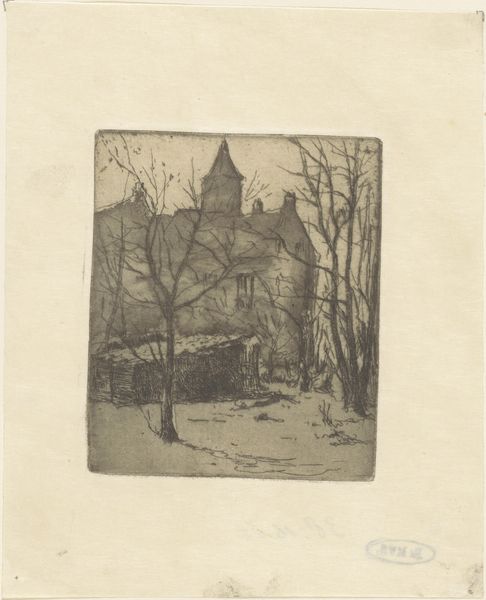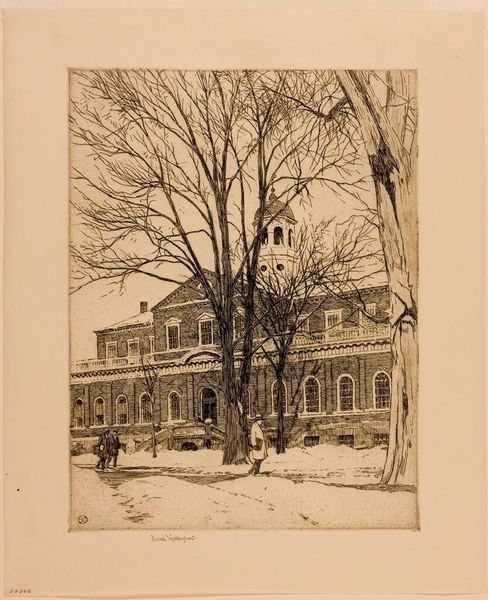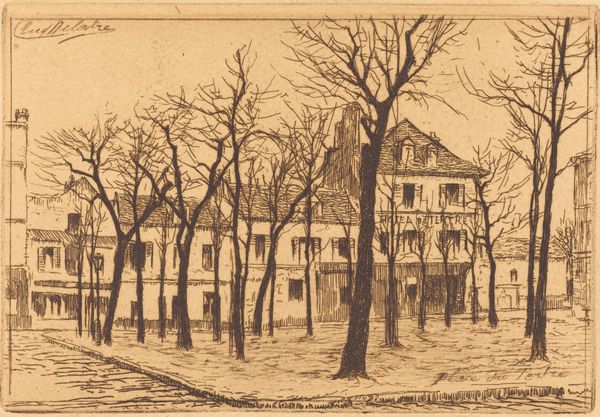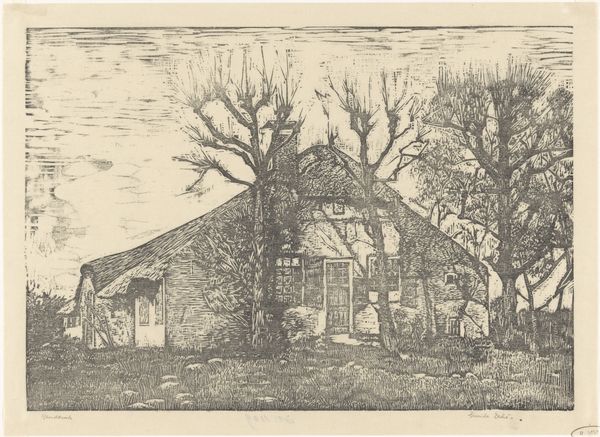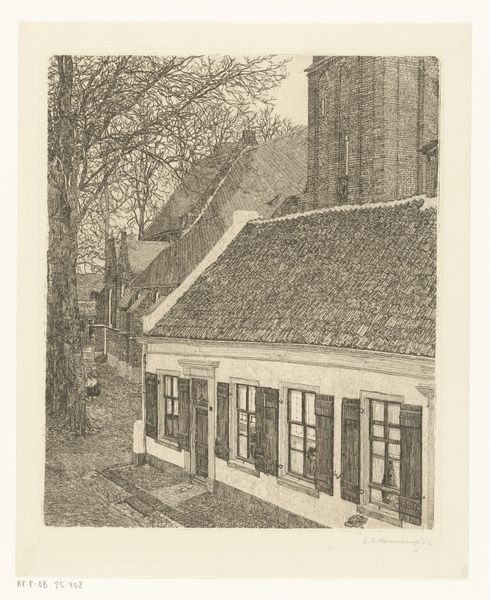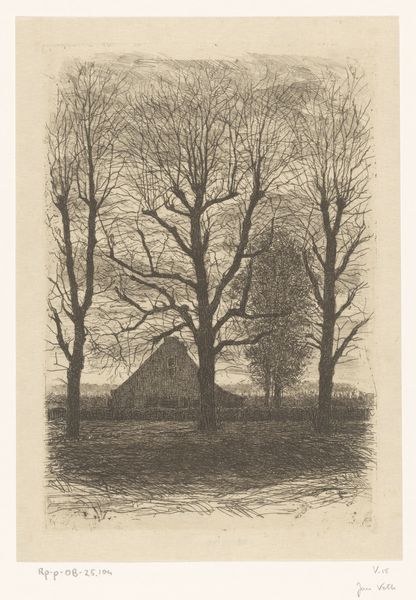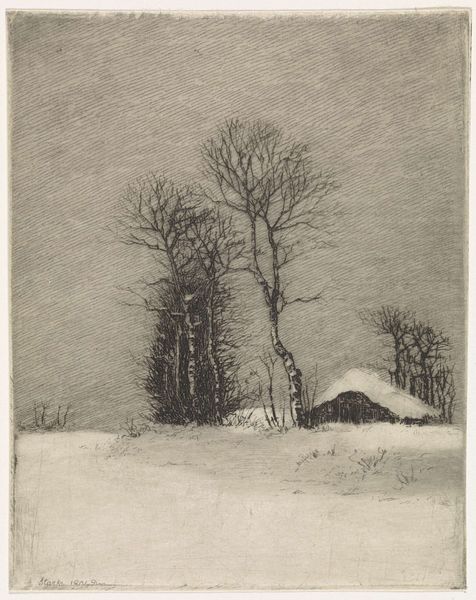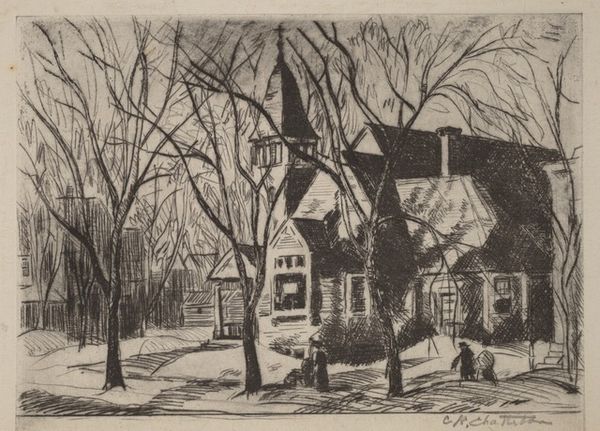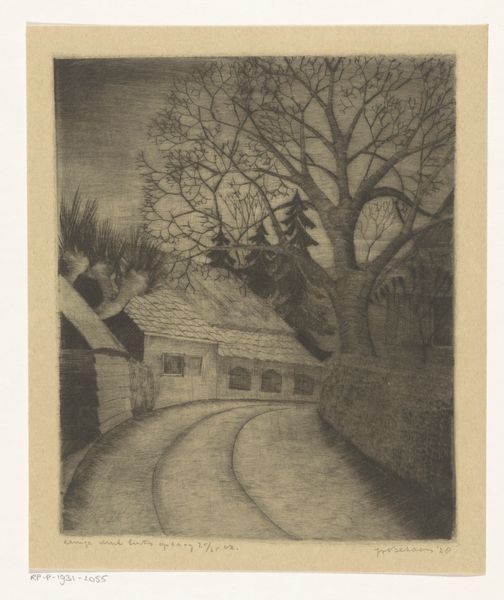
print, etching
# print
#
etching
#
landscape
#
pencil drawing
#
line
#
cityscape
#
realism
Dimensions: plate: 40.32 × 32.86 cm (15 7/8 × 12 15/16 in.) sheet: 52.07 × 38.42 cm (20 1/2 × 15 1/8 in.)
Copyright: National Gallery of Art: CC0 1.0
Editor: This print, an etching actually, is titled "West Entrance of the Field Museum" by Beatrice S. Levy. It looks like a bleak winter scene. The museum is grand but feels distant through the screen of bare trees. What significance do you see in depicting a public institution this way? Curator: It's interesting you call it bleak. I think Levy’s choice to represent the Field Museum in this particular state offers commentary on the institution's role within the broader social landscape of its time. The etching technique, with its emphasis on line and shadow, reinforces the monumental architecture, yet also sets up a contrast, wouldn’t you agree, with the natural, almost fragile forms of the trees. Editor: Definitely! The way the spindly branches obscure parts of the building almost makes the museum seem inaccessible. How did institutions like the Field Museum see their place in society back then, and how might this etching be playing with that image? Curator: Well, the early 20th century saw museums positioning themselves as educational and cultural hubs, striving for a sense of democratization of knowledge. But institutions also battled for funding and public interest, and were always making claims of scientific and social authority. Levy's print acknowledges that tension, hinting at how institutions presented themselves versus their actual accessibility and perceived relevance for different societal groups. Are the trees protective or concealing? Are they nature's filter? It begs that question. Editor: So, the print is not just a landscape, but a commentary on the museum’s projected image? Curator: Precisely. And perhaps a reflection on the artist’s own complex relationship with institutions of knowledge and culture. Art is never made in a vacuum, and the artist's choices reflect these debates. Editor: That gives me a whole new way to appreciate what's going on here, beyond just the beauty of the lines. It really helps contextualize the image. Curator: I'm glad to offer this additional layer, that's why History and visual literacy go hand-in-hand.
Comments
No comments
Be the first to comment and join the conversation on the ultimate creative platform.
